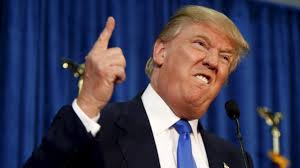The US President, Donald Trump, on Tuesday threatened to impose tariffs on an additional $200 billion (about £151billion) of Chinese goods as the trade face-off between his country and China escalates.
During the 2016 electioneering campaign, Trump had promised to use tariffs to cut the US trade deficits, insisting that China has been unfairly benefiting from a trade imbalance with the US for many years.
Last week, the US President confirmed that the US would impose 25 percent tariffs on $50 billion worth of Chinese goods.
In response, China threatened that it would hit 659 US products worth $50 billion, including agricultural products, cars and marine products, with a similar tax.
Trump had on Monday condemned alleged China’s “unfair practices related to the acquisition of American intellectual property and technology”.
He explained further: “Rather than altering those practices, it is now threatening United States companies, workers, and farmers who have done nothing wrong.”
Trump added that the new tariffs would “go into effect if China refuses to change its practices, and also if it insists on going forward with the new tariffs that it has recently announced.
“If China increases its tariffs yet again, we will meet that action by pursuing additional tariffs on another $200 billion of goods”, the US President stressed
However, China’s Commerce Ministry reacted saying that “if the US acts irrationally and issues a list, China will have no choice but to take comprehensive measures of a corresponding number and quality and take strong, powerful countermeasures.”
But many analysts have described the trade war as undesirable for the two countries, particularly for the US, as the imposed tariffs are likely to make products cost more for US consumers and hurt some of the businesses, which depend on China for spare parts or assembly, that the Trump’s administration is trying to protect.
As expected the escalating row is already impacting on stock markets, particularly in Europe, Asia and the US.
In the US, The Dow Jones, dipped more than 300 points (1.6 percent) when trading opened in New York on Tuesday while Asian stock markets had slumped earlier, with Shanghai faring the worst, down 3.8%.
Similarly, European markets also fell with some trading recording more than 1 percent decline in their values.






